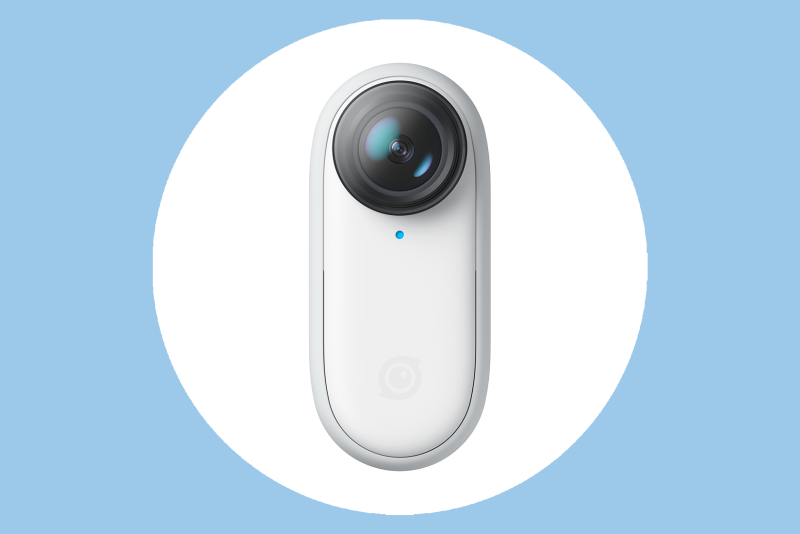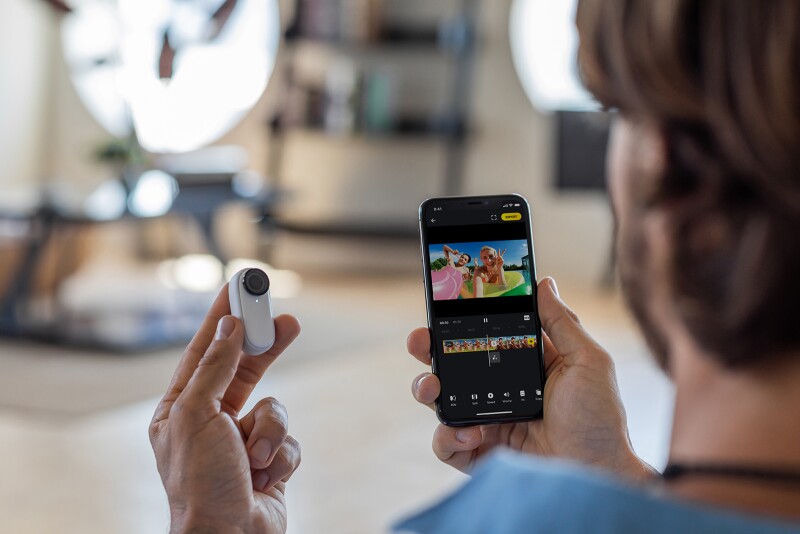A picture might tell a thousand words, but sometimes you need video to truly capture a moment. The cacophony of colorful fish I saw while snorkeling in the Philippines. That thrilling motorcycle taxi ride around Bangkok. My son’s first steps on a tatami floor in Tokyo. Even though I’m a travel photographer by trade, these were times where my trusty mirrorless camera or my iPhone just wouldn’t suffice.
So for a while, I had half an eye out for an action camera I could easily slip into my pocket or gear bag. Not for client work, but to capture those special moments between shoots and on personal trips. I needed the video quality and versatility an iPhone couldn’t match, without all the bells and whistles of a pro-grade action camera.
What to consider when buying an action camera
- Image stabilization is an important one, and it’s one of the main reasons for choosing an action cam over a phone camera. Most cams come with image stabilization these days, but action-oriented cams like the GoPro Hero 10 will keep your video shake-free in even the most high-intensity situations, like a bumpy BMX ride or a surf in choppy waves.
- Opt for a larger sensor size when you’re planning to film a lot of early morning and late-night scenes in less-than-ideal lighting conditions.
- Keep an eye on the frame rates. Higher frame-per-second rate (the “fps” you see on the specs list) result in those smooth slow-mos. Look for at least 60 fps.
- 6K or 1440p? If you’re just filming for social media, a standard resolution of 1440p will suffice. Higher-resolution cameras result in sharper images on bigger screens, but come with higher price tags. Pocket the price difference and invest in accessories instead.
- Action cameras come in all shapes and sizes: There are blocky GoPros and sleek, bullet-shaped ones from Polaroid. All have their pros and cons—bigger sizes often mean a bump in battery life and may sport a live view screen. Smaller ones, on the other hand, are more versatile (allowing even more creative ways of shooting) and easier to carry.
The Insta360 GO 2
Keeping all of that in mind, when Insta360 asked me to try out its Insta360 GO 2 (with improved image quality, storage capacity, and battery life compared to their original Insta360 GO), I jumped on the opportunity—and this nifty action cam has traveled with me ever since.
Why? Because it’s tiny. Without its case, the pill-shaped camera is barely bigger than my thumb and weighs as little as an AA battery (27 grams, to be precise). It has no buttons: You tap the space under the lens to start filming—so straightforward, even my three-year-old learned how to use it.
The small size makes it versatile, too. Thanks to its magnetic back, you can stick it onto all kinds of metal surfaces: I snapped it to my fridge to film a cooking timelapse for TikTok and stuck it to a lighting pole to capture my son’s skateboarding practice. I also loved the magnetic pendant necklace that came in the box. It allowed me to snap the camera to my son’s chest for POV-style videos without the need for a bulky harness that the GoPro requires. The box also includes a pivot mount that sticks to smooth surfaces (think: car windows, kitchen shelves, mirrors) and a mount to clip the camera to the rim of your cap.
The case, resembling an Apple AirPod case in size and design, is a multi-tool: It houses an additional battery, charger, and remote control and can transform into a mini-tripod with the collapsible “wings” on its back. It also has a small screen (which the camera lacks), on which you can toggle between capture modes, check battery life, and adjust settings.
The camera works OK outside its case, but over weeks of filming, I found myself using the camera mounted in the case more often than not. Without it, the camera’s battery drains within 30 minutes (even faster when filming in Pro Video mode, more on that later), while the case extends capture time up to 150 minutes. Plus, I wouldn’t have to rely on the camera’s rather confusing buzzes and light flashes to see when and in which mode it was filming.

The Insta360 GO 2 is just barely bigger than your thumb and weighs as little as an AA battery.
Courtesy of Insta360
Buy now: $300, store.insta360.com; bhphotovideo.com; $270 (was $300), amazon.com
Now, the nitty-gritty
The Insta360 GO 2 captures 1440p videos in up to 50 frames per second (1080p and 120 fps in Slow Motion mode) and takes photos at 9MP. In basic English, that means photos and videos will look sharp on an average laptop screen but will start to look blurred on larger monitors. The camera is also waterproof up to 13 feet and has an internal storage of 32GB. Are these jaw-dropping specs? No, especially not compared to the similarly priced GoPro Hero 8, which shoots 4K video and has a 12MP sensor. But that’s missing the point: The Insta360 GO 2 isn’t meant to capture NatGeo-worthy footage in pixel-perfect resolution. It’s made for creative spur-of-the-moment clips for travel vlogs, TikToks, and Instagram Stories and does that incredibly well.
That’s not to say its video quality feels inferior, either. Given that most videos will be viewed on a mobile screen, the difference between the GO 2’s 1440p output and the 4K footage of similar action cams is hardly noticeable. For the best quality, I mostly filmed in Pro Video mode—even though that meant using more storage and battery power. The added stabilization (compared to regular video mode) and “horizon lock” function result in butter-smooth footage with vivid colors and a good balance between highlights and shadows. While editing Pro Video (as well as videos shot in Hyperlapse and Slow Motion mode) in the Insta360 app, I loved that I could switch the video orientation and field of view (from fish-eye-like to linear)—even after filming. It allowed me to create a 9:16 Instagram Reel and a 16:9 YouTube video from the same clip without losing quality.
And there’s more to love about the app, which easily connects to the camera via BlueTooth and Wi-Fi. You can use it as a remote control with live view (though I noticed that does guzzle battery power) and switch settings and button commands (e.g., one tap on the camera body to take a picture, two taps to start filming in Pro Video mode). Beyond the basic editing tools, it also packs a powerful AI-assisted algorithm that can automatically select the best segments of longer clips, making editing a breeze.

The app easily connects to the camera via BlueTooth and WiFi, and can also be used as a remote control.
Courtesy of Insta360
There are some downsides to consider, of course
The lack of 4K is an obvious one if you’re planning to film more than clips for social media and need high-definition footage to edit in professional desktop software. The GO 2 also could’ve done with a better battery (a trade-off for its pocketable size) and the microphone leaves a lot to be desired. The fact that the 32GB internal memory isn’t swappable (unlike the GoPro, which uses microSD cards for storage) is annoying on busy trips when I don’t always have the time to offload footage onto my phone or laptop (although a 64GB edition has recently become available for an additional $30).
But still, if you’re just looking for a fun camera to shoot short clips during vacations and bike rides around town, it’s hard to beat this pocket-sized powerhouse.








